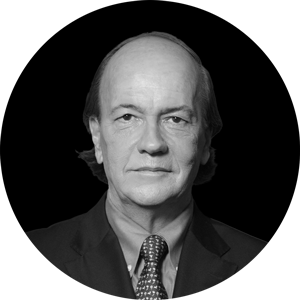Not all market forecasting is created equal.
Market forecasting involves a combination of art and science. It requires sound models, rigorous methodology, and elimination of personal bias. All three of those elements are easier said than done.
If you think you have a crystal ball, you don’t. If you think you’re smarter than everyone else, you’re not. What can set you apart are models, methods and objectivity. That’s how you achieve accuracy and build a track record.
That’s not to say anecdotal evidence doesn’t have a role to play. Conventional statisticians reject anecdotal evidence because it cannot be quantified or repeated. That’s their problem.
In fact, anecdotal evidence is extremely powerful when added to a Bayesian equation (which I use). Computing the conditional probability that the anecdotal behaviour would even exist unless the thesis were true gives forecasters an advantage.
[conversion type=”in_post”]
Wall Street ignores an old spook method
I’ve yet to see anyone on Wall Street or in the media use Bayesian models. They are used all the time in intelligence analysis (where I learned them) and in physical sciences, where you need to make progress even when data is scarce. To paraphrase Don Rumsfeld, you go to war (or the polls) with the data you have.
My models use four branches of science. The first is a Bayesian equation. This involves applied mathematics. You start with a hypothesis based on whatever data you have (which may not be much) and is admittedly an informed guess. Then you continually update the hypothesis using new data that comes in after the original hypothesis.
Each time you get new data, you ask yourself how likely it is that the new data would appear if the original hypothesis were either true or false. Based on that, you either increase (or decrease) the probability that the hypothesis is correct.
If the hypothesis gets weaker, you discard it. If the hypothesis gets stronger, you keep going. If the hypothesis moves from a 50% level (basically a guess) to a 90% level (close to a sure thing), you can even go on TV and state the outcome with high confidence (like I have done).
Statisticians intensely dislike the idea of updating an old hypothesis with new data. They prefer to wait for more data before forming a hypothesis in the first place.
But some situations can’t wait. In intelligence and national security, analyses can be a matter of life or death. In elections, the big day is coming whether you’re ready or not. Bayes is how you deal with critical situations and scarce data. It’s a surprisingly powerful forecasting tool if you know how to use it.
People are complicated, but predictable
The second branch of science used in my models is complexity theory. This theory is widely used in areas such as seismology, climatology and epidemiology, but it’s almost never used in capital markets or politics.
Complexity theory demonstrates how completely unexpected events (called ‘emergent properties’) seem to come out of nowhere to disrupt stable systems.
These events can then cause sequential collapses (called ‘cascades’), which can lead to the catastrophic collapse of major structures, including the power grid, the internet and capital markets. The financial liquidity crisis in 2008 — which took down Bear Stearns, Fannie Mae, Freddie Mac, Lehman Brothers and AIG in a rapid sequence — is a good example of cascading failure.
The third branch of science I use is behavioural psychology. This is the field of science that identifies and describes behavioural biases. It turns out that humans don’t act like ‘rational’ wealth-maximising robots. They behave like…humans.
People have a recency bias (that overweights fresh events), an anchoring bias (that overweights past events) and a loss aversion bias (that makes people fear loss more than they desire gain).
These biases won’t go away. They’re the result of millions of years of evolution. But, once you identify them, you can overcome them personally and factor them into forecasts of stock market behaviour.
Bad market forecasting ignores history
Finally, the fourth branch of science embedded in my models is history. Economists reject the use of history because it cannot be quantified and cannot be tested in a computer. Economists do use historical times series of data, but this is solely for doing regressions and correlations. There is no effort to look behind the numbers to see how people actually behaved and what prompted them to behave that way.
In truth, human nature has not changed much in 50,000 years. Economists who ignore history do so at their peril. That’s one reason they are continually blindsided by events that can easily be foreseen based on past panics.
So, that’s the toolkit: Bayes’ equation, complexity theory, psychology and history. These tools help to produce powerful predictive analytics. None of these tools are widely used on Wall Street. All of them are used in my models. That’s how I predicted Brexit and Trump against the odds.
|
All the best, |
 |
|
Jim Rickards, PS: How Exposed Are You to an Aussie Recession?…and three steps to ‘recession-proofing’ your wealth. Download your free report now. |

